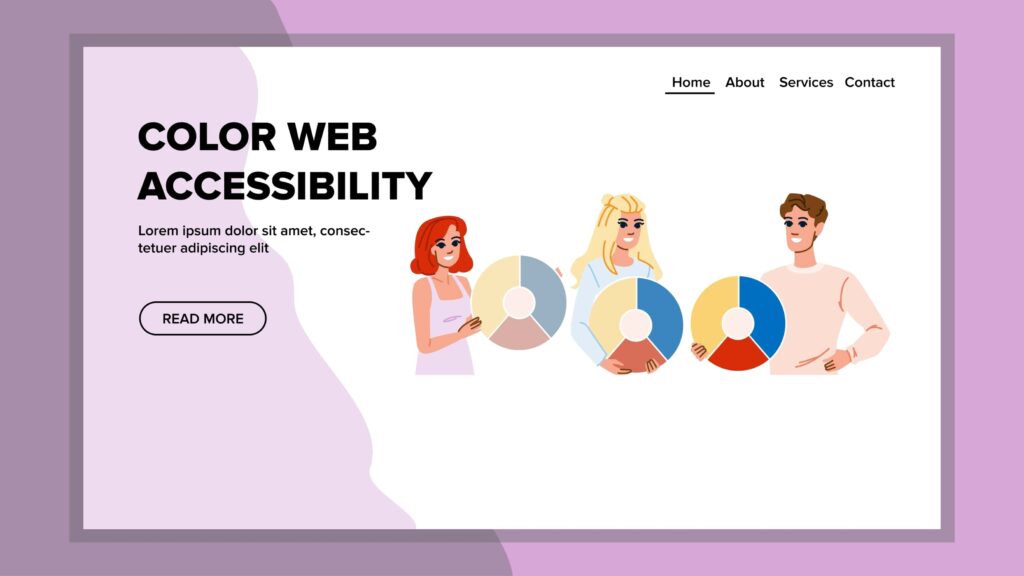Pulse of Information
Your source for the latest insights and updates.
Web Accessibility: Because Everyone Deserves a Seat at the Digital Table
Unlock the digital world for all! Discover essential web accessibility tips and ensure everyone has a seat at your online table.
Understanding Web Accessibility: Key Principles for an Inclusive Digital Experience
Web accessibility refers to the practice of designing websites and digital content that can be easily accessed and understood by all users, including those with disabilities. By adhering to certain key principles, developers and content creators can ensure their web platforms are not only compliant with legal standards but also provide a more inclusive digital experience. The main principles of web accessibility include perceivable, operable, understandable, and robust design. Each of these principles plays a crucial role in enabling users to interact with online content effectively. For instance, providing alternative text for images allows visually impaired users to understand visual content through screen readers.
To truly create an inclusive digital experience, it's essential to incorporate accessibility best practices throughout the design process. This includes using proper semantic HTML elements, ensuring sufficient color contrast, and providing keyboard navigation options. Additionally, it's important to conduct accessibility testing with real users, pushing the boundaries of traditional user experience research. Remember, web accessibility isn't just about meeting standards; it's about fostering a welcoming environment for everyone, ensuring no one is left behind in the digital landscape. By embracing these principles, you not only enhance user satisfaction but also expand your audience reach.

The Importance of Web Accessibility: Why It Matters for Everyone
Web accessibility is critical as it ensures that all individuals, regardless of their abilities or disabilities, can access and interact with online content. This inclusivity is vital because approximately 15% of the world's population lives with some form of disability. By making websites more accessible, we not only comply with legal requirements but also reach a wider audience. A well-designed accessible website benefits everyone, offering features such as better navigation, clearer content structure, and enhanced user experience. These improvements can lead to increased engagement, higher conversion rates, and ultimately greater customer satisfaction.
Moreover, web accessibility is about breaking down barriers that hinder people from fully participating in the digital world. When websites are designed with accessibility in mind, they support a variety of tools and technologies, such as screen readers and speech recognition software, that help individuals with disabilities. This not only fosters an inclusive environment but also reinforces the idea that everyone deserves equal access to information and services online. In this way, investing in web accessibility is not just a legal imperative; it is a moral responsibility that benefits society as a whole.
Common Accessibility Mistakes to Avoid: Tips for an Inclusive Website
Creating an inclusive website is essential for ensuring that all users, including those with disabilities, can access your content. One of the most common accessibility mistakes is failing to provide alternative text for images. This is crucial for users who rely on screen readers, as they interpret the visual content aloud. Remember to include descriptive alt text that conveys the function and purpose of each image. Additionally, ensure that all interactive elements, like buttons and links, are keyboard navigable. This will help users who cannot use a mouse effectively navigate your site.
Another frequent oversight involves not using proper heading structure. A well-organized heading hierarchy aids in both user experience and SEO, allowing screen reader users to understand the layout of your content. Use H1 for the main title, followed by H2 for primary section headings and H3 for sub-sections. Additionally, be mindful of color contrast; text should be easily readable against the background. Tools are available to check color contrast ratios, ensuring that your site is compliant with WCAG guidelines. By making these adjustments, you will create a more accessible and welcoming online environment for all users.